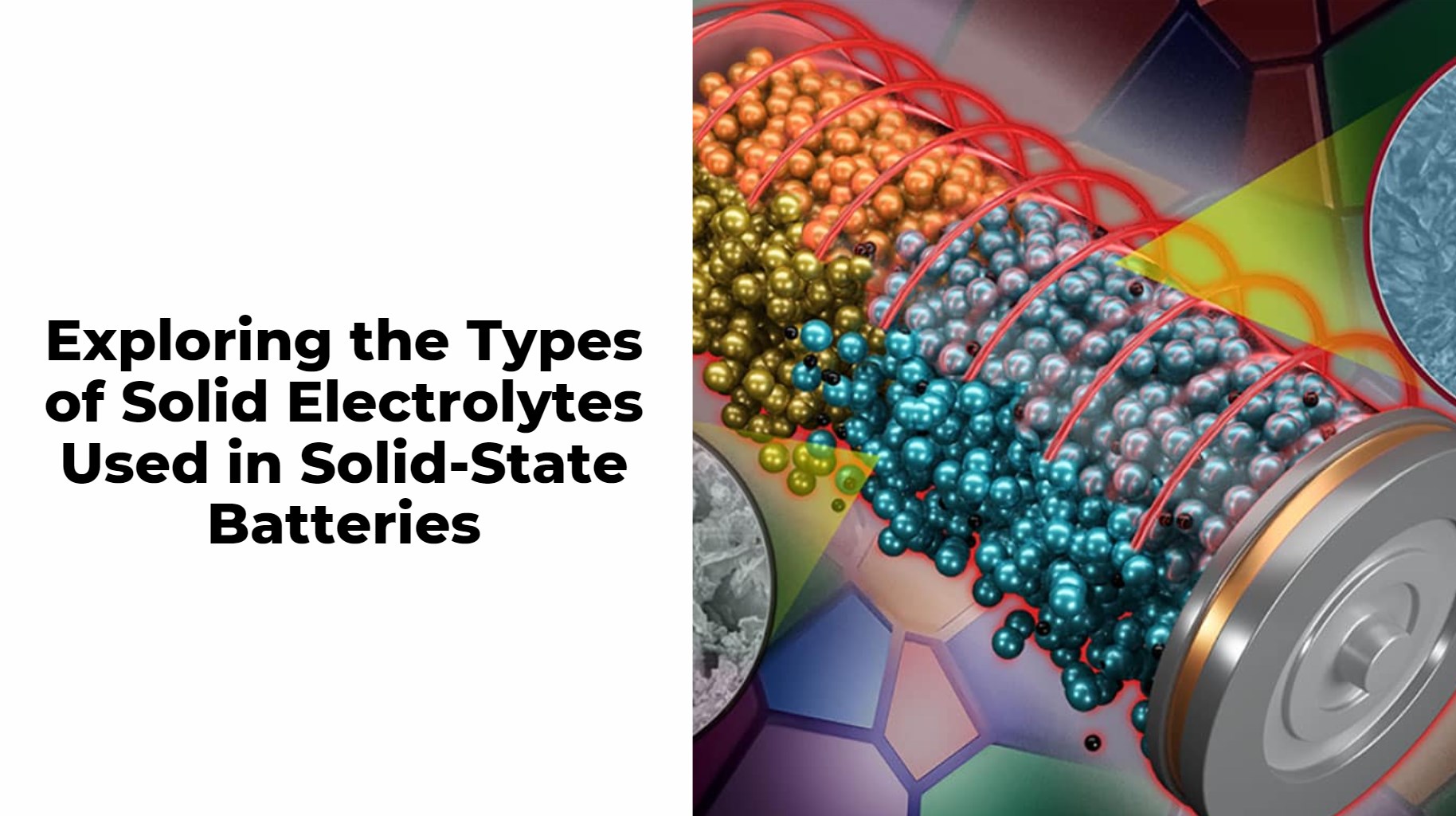Solid-state batteries represent a significant leap forward in battery technology, and their performance largely hinges on the type of solid electrolyte used. Solid electrolytes (SEs) play a crucial role in facilitating ionic conduction between the anode and cathode, directly impacting the battery’s efficiency, safety, and longevity. This article provides a comprehensive overview of the various types of solid electrolytes employed in solid-state batteries, highlighting their unique properties, advantages, and challenges.
Solid electrolytes are crucial for solid-state batteries. Common types include ceramic electrolytes, known for high ionic conductivity but brittleness; polymer electrolytes, which are flexible but less conductive; and composite electrolytes, combining both for optimal performance. These materials enhance battery safety, longevity, and efficiency, making them vital for future energy storage solutions.
Types of Solid Electrolytes
1. Oxide Electrolytes
Oxide electrolytes are among the most established types of solid electrolytes used in solid-state batteries. These electrolytes are composed of lithium combined with oxygen and other elements such as titanium, lanthanum, or germanium. They are known for their excellent electrochemical stability and mechanical strength, making them suitable for high-voltage applications.
Key Examples:
- Garnet-Type: Li₆.₄La₃Zr₁.₄Ta₀.₆O₁₂ (LLZO)
- Properties: Offers high stability and mechanical strength. It has a wide electrochemical window, allowing it to operate at higher voltages.
- Perovskite-Type: Li₃xLa₂/₃₋ₓTiO₃ (LLTO)
- Properties: Known for good ionic conductivity and stability. This type of electrolyte can be used in various battery configurations.
- NASICON-Type: Li₁.₅Al₀.₅Ge₁.₅(PO₄)₃ (LAGP)
- Properties: Provides a good balance of ionic conductivity and chemical stability.
- LATP: Li₁.₄Al₀.₄Ti₁.₆(PO₄)₃
- Properties: Known for its high ionic conductivity and thermal stability.
While oxide electrolytes are praised for their stability and mechanical robustness, they typically exhibit lower ionic conductivity compared to sulfide electrolytes. This limitation can impact their performance in thick layers, making them less efficient in some high-energy applications.
2. Sulfide Electrolytes
Sulfide electrolytes are recognized for their exceptional ionic conductivity, often surpassing that of traditional liquid electrolytes. This makes them highly competitive in terms of performance. However, sulfide electrolytes can be sensitive to moisture and may present stability issues, complicating their widespread adoption.
Key Examples:
- Li₁₀GeP₂S₁₂
- Properties: Achieves very high ionic conductivity, which is beneficial for high-performance battery applications.
- Li₂S-P₂S₅
- Properties: Known for its high ionic conductivity and compatibility with various electrode materials.
Sulfide electrolytes offer high ionic conductivity (up to 10⁻² S/cm), making them suitable for high-energy density applications. Despite their advantages, moisture sensitivity and stability concerns remain significant challenges that need to be addressed.
3. Polymer Electrolytes
Polymer electrolytes consist of solid polymer matrices that conduct lithium ions. These electrolytes are generally easier to process and can be produced at a lower cost compared to inorganic electrolytes. However, their ionic conductivity is typically lower, which can limit their performance in high-energy applications.
Key Examples:
- Polyethylene Oxide (PEO)
- Properties: Commonly used due to its ease of processing and good ionic conductivity when combined with lithium salts.
- Polyacrylonitrile (PAN)
- Properties: Provides reasonable ionic conductivity and flexibility, making it suitable for various battery configurations.
Polymer electrolytes offer cost-effectiveness and easier production but are often limited by their lower ionic conductivity (typically ranging from 10⁻⁴ to 10⁻³ S/cm). They are more suitable for applications where high energy density is not critical.
4. Halide Electrolytes
Halide electrolytes are emerging as a promising category due to their unique properties. These electrolytes are based on lithium halides, such as lithium chloride, and offer a balance of ionic conductivity and cost.
Key Examples:
- Lithium Chloride-Based Electrolytes
- Properties: Offer good ionic conductivity and are less expensive compared to oxide and sulfide electrolytes.
Halide electrolytes show potential for future development, with ongoing research focused on improving their performance and commercial viability. They may offer competitive properties while being more cost-effective than some other solid electrolytes.
Summary
In summary, the main types of solid electrolytes used in solid-state batteries are:
- Oxide Electrolytes: Known for stability and mechanical strength but with lower ionic conductivity.
- Sulfide Electrolytes: Offer high ionic conductivity but face stability and moisture sensitivity issues.
- Polymer Electrolytes: Cost-effective and easier to produce, with lower ionic conductivity.
- Halide Electrolytes: Promising for future development, combining good ionic conductivity with cost advantages.
Each type of solid electrolyte has its own set of advantages and challenges. Ongoing research and development are crucial to overcoming these challenges and enhancing the performance and commercial viability of solid-state batteries. As advancements continue, these electrolytes will play a key role in shaping the future of energy storage technology.




